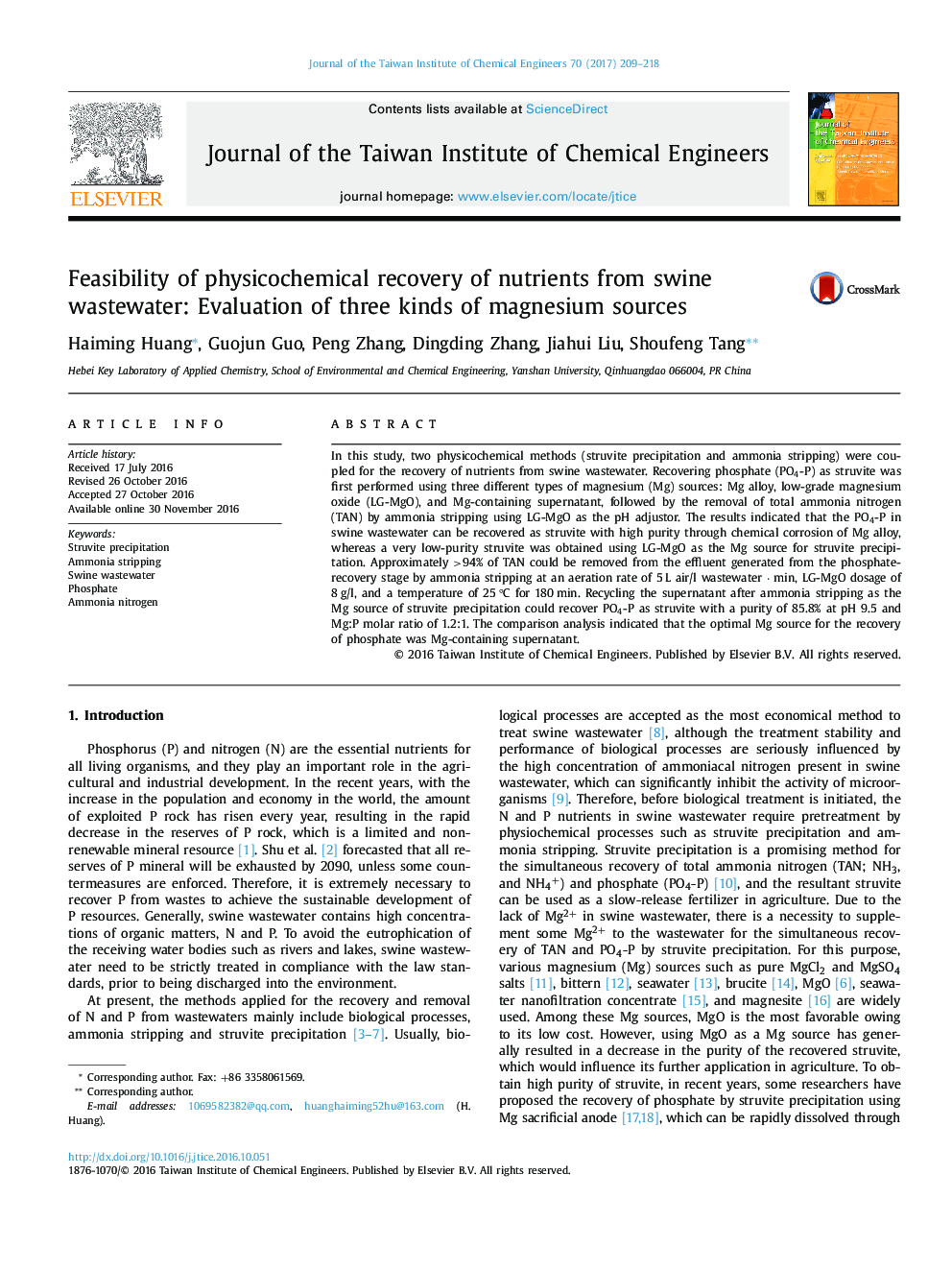| Article ID | Journal | Published Year | Pages | File Type |
|---|---|---|---|---|
| 4998901 | Journal of the Taiwan Institute of Chemical Engineers | 2017 | 10 Pages |
â¢Crystallization of struvite by Mg alloy corrosion was feasible.â¢>94% of ammonium was removed by air stripping using low-grade MgO as pH adjustor.â¢Mg-containing supernatant after air stripping could be reused to precipitate struvite.â¢Mg-containing supernatant was the optimal Mg source of struvite precipitation.
In this study, two physicochemical methods (struvite precipitation and ammonia stripping) were coupled for the recovery of nutrients from swine wastewater. Recovering phosphate (PO4-P) as struvite was first performed using three different types of magnesium (Mg) sources: Mg alloy, low-grade magnesium oxide (LG-MgO), and Mg-containing supernatant, followed by the removal of total ammonia nitrogen (TAN) by ammonia stripping using LG-MgO as the pH adjustor. The results indicated that the PO4-P in swine wastewater can be recovered as struvite with high purity through chemical corrosion of Mg alloy, whereas a very low-purity struvite was obtained using LG-MgO as the Mg source for struvite precipitation. Approximately >94% of TAN could be removed from the effluent generated from the phosphate-recovery stage by ammonia stripping at an aeration rate of 5 L air/l wastewater · min, LG-MgO dosage of 8 g/l, and a temperature of 25 °C for 180 min. Recycling the supernatant after ammonia stripping as the Mg source of struvite precipitation could recover PO4-P as struvite with a purity of 85.8% at pH 9.5 and Mg:P molar ratio of 1.2:1. The comparison analysis indicated that the optimal Mg source for the recovery of phosphate was Mg-containing supernatant.
Graphical abstractDownload high-res image (387KB)Download full-size image
